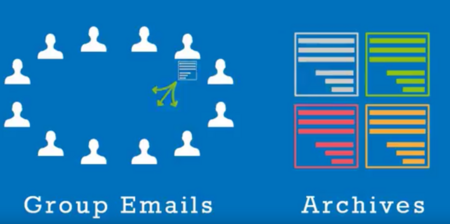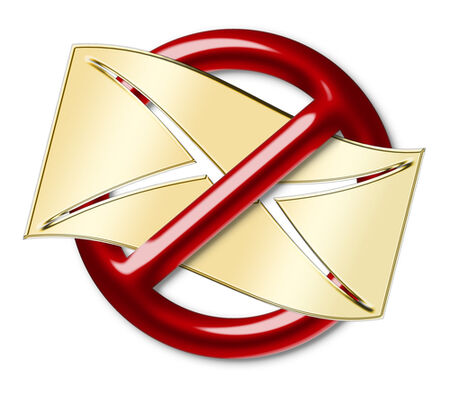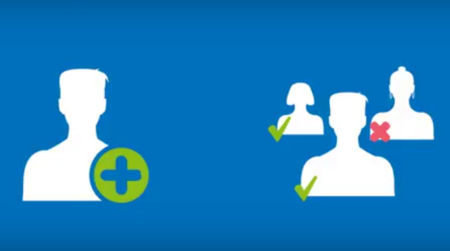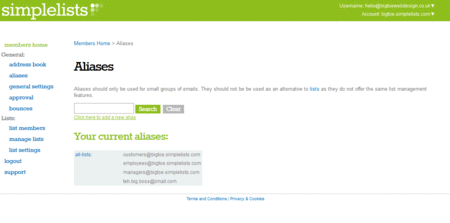
In the realm of online communities, Yahoo Groups reigned supreme as a platform for connecting like-minded individuals through mailing lists and group discussions. However, the sun has set on Yahoo Groups, leaving a void for its users, particularly those who were part of the FSOA (Foreign Service Oral Assessment) Yahoo Group.

In today’s digital age, email has become an essential tool for communication. It is used by individuals and businesses alike to connect with customers, colleagues, friends, and family. Group email is a communication tool that allows businesses to communicate with a group of people simultaneously. This article will explore what a group email is, what it is used for, and how it can be managed using a group email service.

The answer is simple: To save time, money, and resources.

If you’re running a business, sports club, charity or educational establishment, you’ll understand how important effective communication and collaboration is.

Simplelists offers you a range of options for managing your group email. It’s important to note that we offer free trials for single and multiple list accounts so you may want to use these to carry out a one-off email campaign or have a go at setting up a group list. In this post, we explain the types of accounts in more detail so you can make the right choice to suit your needs.

You are no doubt aware that the European General Data Protection Regulation (GDPR) came into force on 25 May 2018. Your inbox was probably full of messages from the various organisations and groups that hold your contact details, checking whether you still wish to receive messages from them and/or updating you about their privacy policy. Our members received an email explaining how Simplelists is complying with the regulation and we have shared that information here on our blog as well.

Simplelists keeps a record of all of the emails that have been sent to your list. This archive can be useful for new list members who might need to quickly get to grips with topics that have already been covered in a private group discussion. It is also a great tool for keeping a back up of all of your communications. If you haven’t already, you can learn how to set up, view and personalise the archive in a recent post on our blog. Below, we explain how to search your email archive, allowing you to find old emails using a keyword search.

HTML emails are formatted like a web page and can include colours, graphics, tables and links. Most emails that you receive from a shop/business that you subscribe to are likely to use this kind of email. Plain text emails are more like what you might expect to receive from a friend or in a typical work email. Before sending an HTML email to your list, it is worth considering the pros and cons of HTML and plain text emails.

Archives are an easy way to keep a record of all emails that have been sent to your list. This can be very useful for groups that use Simplelists for private group discussion as new members can quickly become familiar with topics that have previously been covered. Everything that has been discussed can be seen and reviewed, like minutes of a meeting, and revisiting old topics can be streamlined by referencing the previous messages. In this short post, we tell you how to set up and personalise your email archive in Simplelists.

It is becoming more widely accepted that 'no-reply’ email addresses can be harmful to an email campaign. The 'no-reply’ email address effectively stops, or tries to put people off from, replying to your emails. While this may help to ensure that your inbox doesn’t become cluttered, it gives a negative message to readers - in effect, you don’t want to hear back from them. This probably isn’t good for business. If you still use 'no-reply’ email addresses in your business/email marketing communications, this post contains some reasons why you might want to stop.

It is possible to allow other people to manage your Simplelists account as a separate account or list administrator. This useful feature enables you to delegate management of your email lists, share the workload and save time. You can set permissions for each new administrator and you don’t have to give everyone full control over your account. For example, an administrator can be allowed to approve messages and manage list members, but prevented from changing account settings. The ability to add delegated administrators means you’ll never need to share login details, which helps keep your account secure. New administrators can be added at any time, enabling easy expansion of your email management system as your organisation or business grows. If you’re making use of the Simplelists API, you can also add API users to your account.

Email addresses can be difficult to remember, resulting in mistakes when people send you an email. An alias can be used to make a straightforward replacement for a long or hard-to-remember address. An alias can also be used to forward messages sent to the alias on to another specified email address or group of addresses.